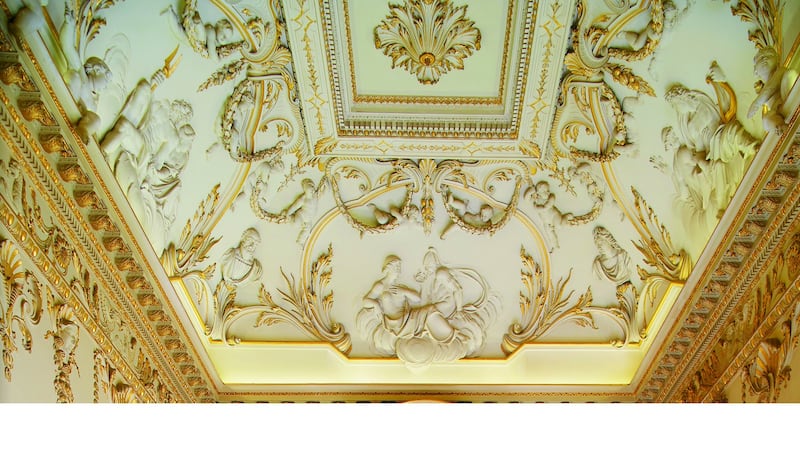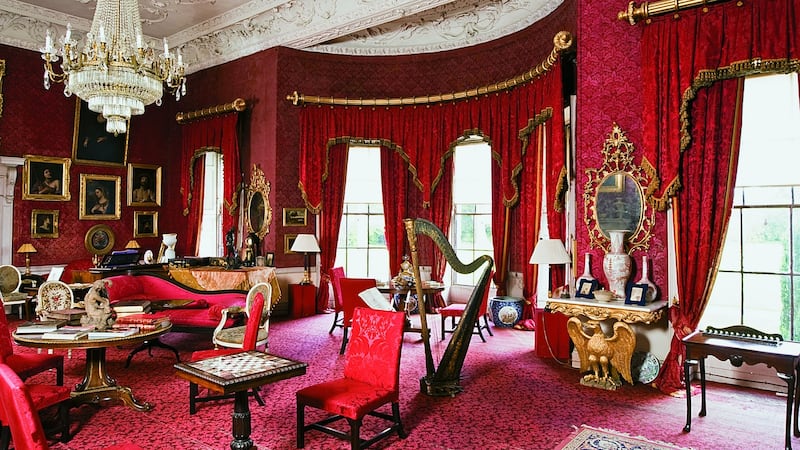It is tempting to romanticise past eras and, notwithstanding the fact that the period encompassed the signing over of Irish sovereignty with the Act of Union in 1801, the Georgian period is a firm favourite. Of course, when we’re idealising golden ages, we tend to think of ourselves as master rather than servant, and forget other less salubrious details such as a lack of modern plumbing and sets of social conventions that weren’t necessarily designed to make life comfortable.
My own experience of Georgian living came when I was lent, for one wonderful summer, a double-fronted Georgian townhouse, right on the harbour in Kinsale. The trouble in paradise was that, not also provided with a battery of servants, taking tea in the exceptionally elegant formal livingroom on the first floor meant trotting down two flights of stairs to the dark original kitchen in the basement, and then all the way up, and back down again when I’d forgotten the biscuits. The bedrooms were more of an afterthought because the Georgians were all about public display.
Still, it gave an insight into the very different lives that were lived in an era that began just over 300 years ago. Architectural historian Patricia McCarthy has taken a step further, to delve into the archives of our national collections, and go through contemporary correspondences to discover how the Georgians really lived and what mattered most to them, through researches into their own words.


One of the things she reveals is that Ireland’s obsession with property is nothing new. Visitors to Georgian country houses seem to revel in measuring rooms, relating in their letters the exact dimensions of the rooms in which they were entertained. “Was it something that the owner proudly boasted of or was it a talent the visitors had developed?” wonders McCarthy.
She also describes feasts with which anyone who, like me, makes a guilty pleasure of reading Georgette Heyer (and less guiltily, Jane Austen), will be familiar: the most preposterous-sounding meals seem to have been quite normal.
According to Mrs Delaney, “you are not invited to dinner to any private gentleman of a thousand a year or less that does not give you seven dishes at one course, and Burgundy and Champagne.”
‘Swilled mutton’
Apparently, meals at Thomas Sheridan’s house, Quilca, in Co Cavan, were a riot: “He enjoyed the effect on his guests of producing on the table a massive meal, ’till he made them sick with ‘swilled’ mutton, or a sheep roasted whole, and stuffed with geese, turkeys and chicken packed in vegetables; when lo! all was taken away, and the best of modern dinners served up with plenty of claret and champagne, to wash away unsavory memories’.”
The Irish Georgians were also innovative. The Smythes of Barbavilla in Co Westmeath had a trapdoor to the cellars under the diningroom to facilitate speedy access to more booze, so that when a visitor to the house ‘‘saw the good beer rise from under ground up to his nose, [he] cried out, good God did you Ever see the like!”
McCarthy is meticulous, going into inventories, plans and letters in scholarly detail, so the book, which is also fully illustrated, will provide a valuable source for future researchers.
But there’s also plenty to intrigue the more casual reader. Elizabeth Ham writes of her dismay during a visit to a house in Kildare as toasts were proposed, and drunk, to everyone present, one by one.
“One of the natural results of all this drinking,” adds McCarthy, “was that one of the cupboards of the sideboard was ‘furnished with a number of chamber pots’.”
Seemingly, as a French visitor wrote, “it is a common practice to relieve oneself while the rest are drinking”.
Another foreign correspondent is likewise shocked, “immediately after the departure of the ladies and immediately beside the table, free rein is given”.
Separate chambers
He writes of “an old admiral who, clad in his dress uniform . . . made much use of this facility for a good ten minutes [ . . .]we felt as if we were listening to the last drops from a roof gutter after a long past thunderstorm.”
Exploring beyond the diningroom, McCarthy discovers a great love of numerous chairs against the walls and dotted about in public rooms, and that while some couples did share a bedroom, most had separate chambers and separate dressing rooms too.
The exception was while travelling where “people of all classes thought nothing of sharing rooms even with perfect strangers”.
Servants, on the other hand, had strictly segregated sleeping quarters, frequently with the housekeeper’s bedroom as a barrier between the two.
She also ferrets out the secret of the bourdaloue, a sauce-boat-shaped chamber pot for women, that could be slipped under your skirts, and used while standing up. There are some inventions that might bear re-inventing, perhaps?
Despite the burnings-out that many suffered in the 1920s, Ireland is rich with Georgian great houses and country houses, and if you're one of the majority who is unlikely ever to own one, you're still spoiled for choice when it comes to a sleepover.
There’s beautiful Ballyfin in Co Laois, meticulously restored, or the funkier updating of Bellinter in Co Meath. Some, like Carton House in Kildare and Farnham in Cavan, have had bedroom wings attached, but you can still opt (at a premium) for a room in the older part, and get to enjoy the saloons and other public spaces.
The Hidden Ireland website (hiddenireland.com) is also a trove of Georgian gems that will put you up for a night or three. Bourdaloue use not obligatory. Life in the Country House in Georgian Ireland by Patricia McCarthy launches at the Irish Architectural Archive, 45 Merrion Square tonight. Published by Yale University Press, £45 (€57 approx.) yalebooks.co.uk










